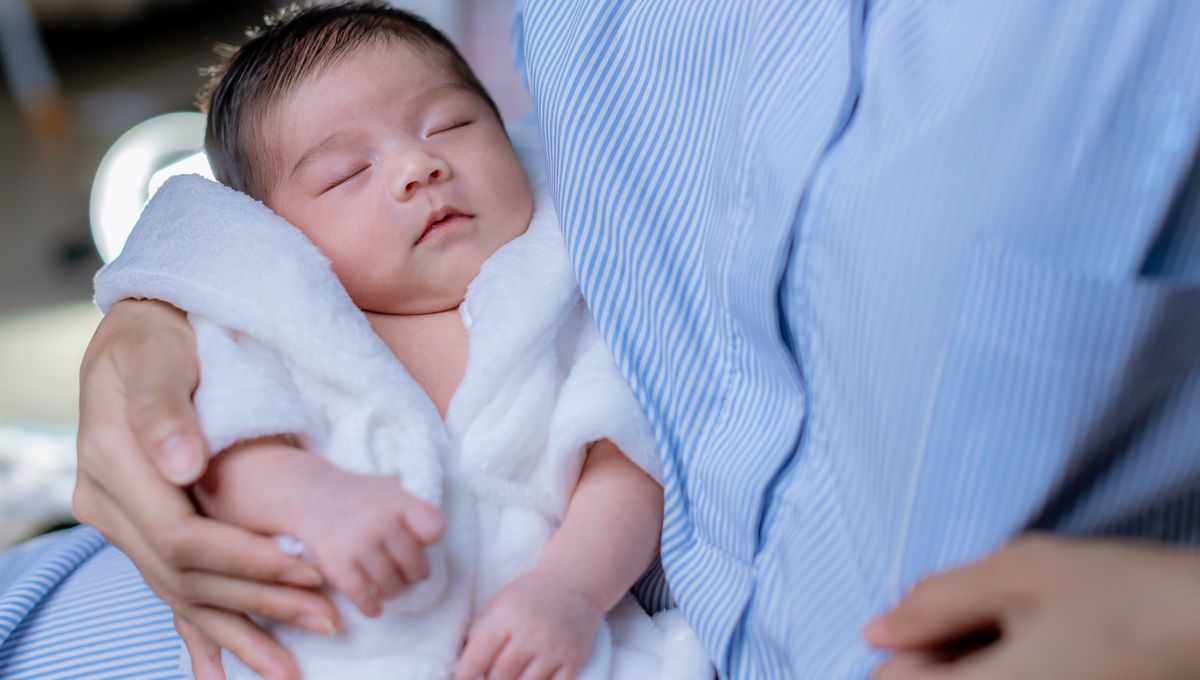
There’s long been a question over whether being born via C-section means babies miss out on exposure to helpful bacteria that they would normally get from their mother’s birth canal. If it turns out these bacteria are important for a baby’s development, one solution that’s been proposed is a process called “vaginal seeding”. It’s not currently recommended by doctors, but in the meantime, scientists are still trying to work out whether it could be beneficial, or whether our ideas about bacteria in newborns are even correct at all.
What is vaginal seeding?
Vaginal seeding involves using a cotton swab to smear vaginal fluids directly onto newborn babies, in an attempt to recreate the scenario of them passing through the birth canal.
When a C-section is performed before the onset of natural labor, or before the waters have broken, the fetus does not come into contact with maternal fluids – and, importantly, the bacteria they naturally contain – as would happen during a vaginal birth.
According to the American College of Obstetricians and Gynecologists (ACOG), some believe that this bacterial exposure during birth is important for the development of the baby’s gut microbiome, attributing an increase in immune disorders like asthma and allergies in children to an increase in C-section deliveries.
There is evidence that a healthy microbiome can be protective against immune system dysfunction. One study in mice found that early exposure to antibiotics increased the risk of asthma and allergies. It’s long been suggested that children need to come into contact with a variety of microbes in their natural environment in order to develop healthy immunity. Gut bacteria have been linked to everything from Alzheimer’s disease, to rheumatoid arthritis, and even how sociable you are.
But this is still a field of very active study, and a lot of the associations between gut bacteria and other aspects of health are far from established fact. As to the benefits to a newborn of being exposed to particular bacteria during a vaginal birth, scientists are yet to reach a consensus.
What does the research tell us?
A large study in 2018 found no evidence of a benefit associated with vaginal seeding. While there is a difference between the gut flora of babies born via vaginal delivery and via C-section, the authors pointed out that “it is impossible to say with any certainty that it is the act of delivering vaginally itself which confers this optimal microbiota, or what species/genera of bacteria might be responsible.”
There are so many other factors at play, such as the age of the mother, exposure to antibiotics, and breastfeeding, that it’s just not possible to know whether it’s vaginal bacteria that are really making the difference.
However, the conversation around vaginal seeding was recently sparked once more by the publication of a new study from a team at Southern Medical University in China. In the first triple-blind study of its kind, 32 newborns born by C-section were treated with gauze soaked in their mother’s vaginal fluid, while 36 newborns – also born by C-section – were treated with saline as a control.
The newborns receiving the microbiota from their mothers had more of these maternal bacteria within their gut flora at 6 weeks, showing that vaginal seeding can allow bacterial species to successfully colonize the gut. These babies also had similar overall levels of mature gut bacteria to babies born vaginally, more than was observed in the C-section babies treated with saline.
The researchers were most interested to discover that infants receiving vaginal seeding scored significantly higher on questionnaires designed to measure brain development compared with babies treated with saline. Their scores were comparable to those of babies born via vaginal delivery.
“We don’t know exactly how early gut bacteria affect their neurodevelopment,” said corresponding author Yan He in a statement. “We need more data to understand this intervention and make it more precise. We may eventually uncover what exactly is beneficial in maternal vaginal microbiota, which could enable us to design therapeutics for all infants born via C-section in the future.”
With that in mind, the team are planning longer-term clinical trials with more participants in the near future.
What are the recommendations?
For now, ACOG guidelines only recommend that vaginal seeding be performed when part of an approved research project. This recognizes the need for and interest in further research on this topic, but underlines the lack of substantive evidence that supports it as a widespread practice.
There is also a small risk of spreading potentially dangerous pathogens to a newborn when vaginal seeding is performed. ACOG stresses that the risk is small, and that women who insist on doing the seeding themselves could be tested for common infections like herpes simplex virus and group B Streptococcus beforehand – incidentally, this pre-testing was done during the recent study in China.
What many doctors do recommend to support healthy immune system development, however, is breastfeeding. As ACOG says: “Although findings are mixed regarding associations between breastfeeding and the development of asthma and atopic disease in childhood, exclusive breastfeeding for the first 6 months of life has multiple known benefits and remains the recommendation of ACOG for all women who do not have physical or medical conditions that prohibit breastfeeding.”
The new study on vaginal seeding is published in Cell Host & Microbe.
The content of this article is not intended to be a substitute for professional medical advice, diagnosis, or treatment. Always seek the advice of qualified health providers with questions you may have regarding medical conditions.
Source Link: Vaginal Seeding Might Be Important For New Babies: What Is It?